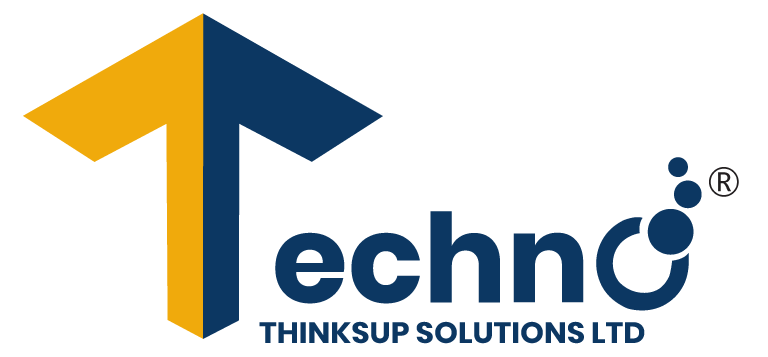
Revolutionize Innovation with Design Thinking
Design Thinking is a human-centered methodology used for creative problem-solving and innovation. It emphasizes understanding the user’s needs, ideating solutions, and iteratively testing prototypes. With its roots in empathy and collaborative teamwork, Design Thinking drives innovation by combining what is desirable from a human perspective with what is technologically feasible and economically viable. This process, widely adopted by top companies, encourages out-of-the-box thinking and delivers user-friendly products and services. Ideal for tackling complex challenges, Design Thinking ensures solutions are practical, innovative, and aligned with user expectations.
At the core of Design Thinking is its focus on collaboration and diversity of thought. By bringing together multidisciplinary teams, it leverages varied perspectives and expertise to foster creative solutions. This collaborative approach not only enhances the richness of ideas but also ensures that solutions are well-rounded and robust. Additionally, Design Thinking promotes a culture of continuous learning and adaptability, essential for navigating today’s rapidly evolving market landscapes. By iteratively refining solutions based on user feedback, it helps organizations stay agile and responsive to changing user needs and technological advancements.
The Process
Design Thinking fosters innovation through a human-centered approach, emphasizing empathy, ideation, prototyping, and testing.
Gain a deep understanding of the users and their needs through observation, engagement, and immersing yourself in their experiences. This stage focuses on identifying users' pain points and desires.
Clearly articulate the problem you want to solve by synthesizing the insights gathered during the empathize stage. Create a user-centric problem statement that guides the design efforts.
Generate a wide range of creative ideas and potential solutions through brainstorming sessions and collaborative thinking. Encourage out-of-the-box ideas to explore diverse possibilities.
Develop scaled-down versions of the potential solutions or features. These prototypes should be quick and inexpensive to create, allowing you to explore different ideas and identify the best ones.
Share prototypes with users to gather feedback and observe how they interact with the solutions. Use this feedback to refine and improve the prototypes, iterating as necessary to address any issues.
Finalize the best solution based on user feedback and testing results. Prepare for a full-scale implementation, ensuring the solution is ready for deployment and aligns with user needs and business goals.
Best Practices We Implement

Practiced Active Listening
At our organization, we engaged deeply with users through interviews and observations, ensuring we thoroughly understood their experiences and emotions without making assumptions.

Crafted Clear Problem Statements
We converted user insights into precise, actionable problem statements that focused on specific needs and challenges, guiding our ideation process effectively.

Encouraged Diverse Perspectives
We created an open environment where all team members felt empowered to share innovative and unconventional ideas, fostering creativity and diverse solutions within our team.

Developed Iteratively
Our team created quick, low-fidelity prototypes to test various aspects of the solution. This approach allowed for rapid experimentation and learning from both successes and failures.

Gathered Honest Feedback
We obtained candid feedback from users on our prototypes. By closely observing their interactions and asking open-ended questions, we gained valuable insights into their experiences.

Ensured Scalability
We developed the final solution to be scalable and adaptable to various contexts. By incorporating ongoing feedback loops, we continually refined and enhanced the product or service post-launch.




 Web Development
Web Development
 App Development
App Development
 IT Consulation
IT Consulation
 UI/UX Design
UI/UX Design
 Ecommerce
Ecommerce
 Content Marketing
Content Marketing
 DevOps Services
DevOps Services
 Software Development
Software Development
 Digital Marketing
Digital Marketing
 Social Media Marketing
Social Media Marketing
 Search Engine Optimization
Search Engine Optimization
 AWS Managed Services
AWS Managed Services
 QA And Software Testing
QA And Software Testing
 Local Search Optimization
Local Search Optimization
 Technology Outsourcing
Technology Outsourcing
 Metaverse Development
Metaverse Development
 Web 3 Consulting
Web 3 Consulting
 IoT App Development
IoT App Development
 VR App Development
VR App Development
 IT Staff Augmentation
IT Staff Augmentation
 Startup App Development
Startup App Development
 Saas App Development
Saas App Development
 Low Code Development
Low Code Development
 Product Engineering
Services
Product Engineering
Services
 Custom CRM Development
Custom CRM Development
 Offshore Development
Center (ODC)
Offshore Development
Center (ODC)
 Machine Learning
Development
Machine Learning
Development
 Blockchain App Development
Blockchain App Development
 Blockchain In Identity Management
Blockchain In Identity Management
 Artificial Intelligence
Development
Artificial Intelligence
Development
 Dedicated Development Team
Dedicated Development Team
 Strategic Mobile
Consulting
Strategic Mobile
Consulting
 Scrum
Scrum
 DevOps
DevOps
 Lean
Lean
 Kanban
Kanban
 V-Model
V-Model
 Waterfall Model
Waterfall Model
 Design Thinking
Design Thinking
 Agile Development
Agile Development
 Prototype Methodology
Prototype Methodology
 Rapid Application Development (RAD)
Rapid Application Development (RAD)
 Feature-Driven
Development (FDD)
Feature-Driven
Development (FDD)
 Dynamic Systems
Development Method (DSDM)
Dynamic Systems
Development Method (DSDM)





